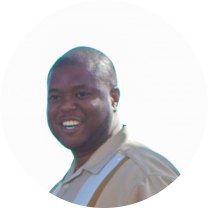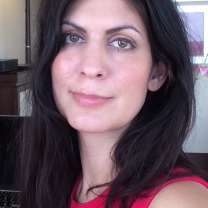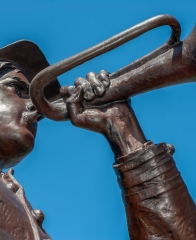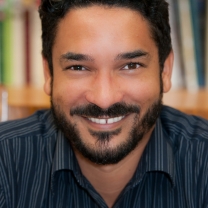 / On Witches and Weinstein
Subscribe
/ On Witches and Weinstein
Subscribe

On October 5, 2017, Jodi Kantor and Megan Twohey published a story in The New York Times about Harvey Weinstein, in which they detailed accusations related to sexual abuse and misconduct that he perpetuated on multiple women over the course of two decades. Five days later, Ronan Farrow penned a corroborating story in The New Yorker, noting that his ten-month investigation had revealed that Weinstein had sexually assaulted or harassed thirteen women, and raped three, in the period between the mid-1990s and 2015. Since then, many more women have come forward to tell their stories of Weinstein’s pattern of abuse. As of October 20, the allegations total more than fifty.
On October 15, following Weinstein’s expulsion from the Motion Picture Academy (which, incidentally, still counts Roman Polanski and Bill Cosby among its members), the BBC asked Woody Allen (“of all people,” commented Lindy West) to respond to Weinstein’s situation. Allen said that the situation is sad not only for the women involved, but also for Weinstein himself. He stated that he hoped that the allegations and investigations would lead to “some amelioration.” But, he cautioned, we must “avoid a witch hunt atmosphere” where “every guy in an office who winks at a woman is suddenly having to call a lawyer to defend himself.”
Allen’s comment is rich for analysis.
The American cultural touchstone for witch hunting is Salem, Massachusetts, known in the Colonial period as Salem Village. On January 20, 1692, witchcraft struck the home of Samuel Parris, Reverend of Salem Village. Parris’ eleven-year-old niece, Abigail Williams, and his nine-year-old daughter, Elizabeth fell into inexplicable fits and convulsions. Soon after, other young girls in the area exhibited similar symptoms. The afflicted girls named a number of local women as their tormentors, claiming the women sent their specters out to inflict harm on them. Over 150 people were formally accused of practicing witchcraft. In June, a special court was convened, The Court of Oyer and Terminer (“To hear and to determine”), to expediently manage the growing number of accused witches. And expedient they were—the first person executed in Salem, Bridget Bishop, was indicted, tried, convicted, and executed within the space of eight days. Thirty people in total were convicted of witchcraft in Salem; nineteen were hanged, one was pressed to death under heavy stones, and seven others died in prison awaiting trial. By October of that year—eight months after the witch-hunts began—the Court of Oyer and Terminer was dissolved, and the hunting stopped.
While horrific, the events in Salem were nothing compared to what was happening throughout Europe from 1400–1700. Estimates suggest that upwards of 100,000 people were executed for witchcraft during that period, the majority of them women.
So what then does Allen mean when he warns us about a witch hunt atmosphere? In actual witch hunts, thousands of women were accused and executed on the basis of what we now recognize as superstition. In what way could this resemble what is happening to Weinstein, Cosby, Knight Landesman, James Toback, Mark Halperin, and others?
Allen is worried that innocent men will be accused left and right by a bunch of hysterical women; that they will be fired, persecuted, etc. without a fair trial or evidence. This would indeed be a harm, but it is definitely unlike the witch hunts. In the real witch hunts, the powerful persecuted the powerless; we lacked adequate scientific understanding to dispel the accusations; and there was superstitious/religious context that made the accusations seem plausible. None of these reasons holds true today. In fact, the opposite is true today. The powerful are being accused by those with less power. We have standards of evidence (admittedly difficult to prove for sex assault, but there are standards nevertheless). And, superstition/religion is no longer needed to make the accusations plausible. We can now point to a clear pattern of evidence that this kind of thing happens—and happens a lot.
In 1486, Dominican theologians Heinrich Kramer and Jacob Sprenger publish a treatise entitled Malleus Maleficarum (The Hammer of Witches). It is an instant hit. The text is a manual for hunting witches. The authors tell their readers that when they look for witches, they must look for women. Relying on empirical evidence, the Bible, and the authority of medieval thinkers, the authors argue that women are more likely to be witches because they are weaker of intellect and morals, which, paired with their heightened sex drives, made them more likely to contract with the devil. The reasoning goes that a woman’s sexual urges could only be met by sexual congress with a supernatural being; given their lower intellect and morals, women will, in some cases, seek such congress out and become involved with the demon world. This book, and many others like it, come to dominate the structure of the witch-hunts throughout Europe.
Our present-day Malleus Maleficarum is not a book. The book is no longer necessary, because we have internalized the core of its content. Women are salacious, jealous, false, opportunists, etc. Therefore, we ought not trust their testimony; to do so would bring ruin (on too many good men). And so, we might think, Allen has it backwards—the witch hunt is still on, but it’s still women who are being hunted. They are no longer jailed, interrogated, and executed for suspicion of magic. Today, they are harassed and abused, pushed out of promising careers and workplaces, and made to feel unsafe in both public and private spaces on the basis of, perhaps, their perceived wantonness and the very real truth that their inferior social status will block their ability to fight back.
What makes witch-hunts stop? In the early modern world, we might point to elements of the new science, with its emphasis on observation and empiricism, that began to influence the elites in such a way that slowed the enthusiasm for proceeding with prosecutions. Perhaps skepticism about the power of the invisible world crept in, as nothing really changed once the witches had been dispatched. Perhaps towns became tired of executing their young women.
That fatigue was at issue in ushering in the end of the Salem affair is suggested by remarks of John Hale. Hale was Reverend of Beverly, just a few miles from Salem, and was an early supporter of the trials. However, once his own wife had been accused, and the number of cases grew, Hale withdrew his support. In his book about the events in Salem, A Modest Inquiry into the Nature of Witchcraft (published posthumously in 1702, two years after his death), he notes that his experience showed “that the more there were apprehended, the more were still afflicted by Satan, and the number of confessors increasing, did but increase the number of the accused, and the executing some, made way for the apprehending of others.” In the end, Hale states: “at last it was evidently seen that there must be a stop put, or the Generation of the Children of God would fall under that condemnation.”
What will it take to stop the contemporary hunt against women? It is difficult to overstate the courage of women who come forward to disclose that they have been harassed or assaulted. For, as history has shown, they are likely to be disbelieved or ill served by their workplaces and/or legal systems. The #metoo campaign goes some distance to showcasing the staggering scope of the problem. In Salem, 350 years ago, powerful men put the legal wheels in motion to facilitate the witch-hunt; and powerful men, like Hale, put a halt to those same wheels. Today, it seems, given the continued institutional imbalance of power between men and women, the witch hunt will end when powerful men speak out against the harassment and abuse of women, and call out behaviors that condone or celebrate such behavior. We might take a page from Reverend Parris himself, who on September 11, 1692, stood before his congregation in Salem Village and told them that the “Devil and his instruments” were warring against “Christ and his followers.” Given this war, he added, “Here are no Newters. Every one is on one side or the other.” We might adopt a similar attitude: here, today, there is no neutral—you are either with the hunted, or with the hunters.
Julie Walsh is Assistant Professor of Philosophy at Wellesley College. She researches and teaches issues of freedom and action in the Early Modern Period, as well as the status and writing of women in this period.
Photo Credit: Everett Historical, "Salem Witch Trail," via Shutterstock, 30 October 2017.








